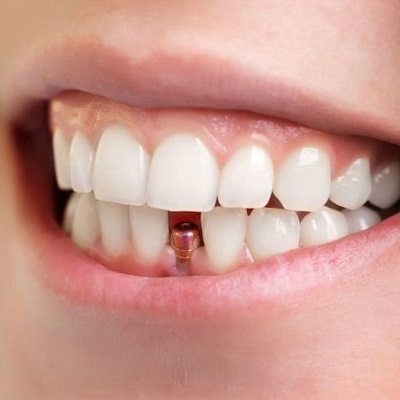Root Canal Treatment Explained: A Guide to the Procedure and Benefits

Strong 8k brings an ultra-HD IPTV experience to your living room and your pocket.
Root canal treatment in Dubai is a common dental procedure that helps save a tooth that has become infected or severely damaged. While it may sound intimidating to some, root canal therapy is often the best solution for preserving your natural teeth and preventing further oral health issues. If you're considering this treatment, it's essential to understand how it works, when it's necessary, and what benefits it offers. This article will guide you through everything you need to know to determine if a root canal is the right solution for you.
What is Root Canal Treatment?:
A root canal treatment is designed to treat the infection or decay inside a tooth’s pulp, which is the soft tissue containing nerves and blood vessels. When this tissue becomes infected, the infection can spread to the surrounding tissues and lead to more serious health problems if not treated. A root canal removes the infected pulp, cleans the tooth, and then seals it to prevent further infection. The tooth is typically restored with a crown to provide strength and functionality.
When Is Root Canal Treatment Necessary?:
Root canal treatment is often needed when a tooth’s pulp becomes infected due to decay, injury, or trauma. Here are some signs that indicate it may be time to consider this treatment:
Common Signs You May Need a Root Canal:
Persistent tooth pain: Pain that lingers or intensifies, especially when chewing or applying pressure, is often a sign of infection in the pulp.
Sensitivity to temperature: Prolonged sensitivity to hot or cold temperatures that doesn’t go away may signal an issue with the pulp.
Swollen gums: Swelling, tenderness, or a pimple-like bump on the gums near the affected tooth could indicate an infection.
Discoloration of the tooth: A tooth that turns dark or gray may be a sign that the pulp has been damaged.
Bad breath or a bad taste in the mouth: These symptoms can occur if the infection has spread.
If you notice any of these signs, it’s important to consult a dentist who can evaluate the situation and determine if a root canal is necessary.
Benefits of Root Canal Treatment:
Root canal treatment offers several advantages, making it a valuable option for many patients. Let’s explore the key benefits of choosing this treatment.
Key Benefits:
Tooth preservation: Root canal treatment is designed to save your natural tooth, allowing you to avoid extraction and maintain the structure of your smile.
Pain relief: Contrary to popular belief, root canal therapy is not painful. It actually helps relieve the pain caused by the infection, restoring comfort.
Prevention of further infection: By removing the infected tissue and sealing the tooth, the procedure helps prevent the spread of infection to surrounding areas.
Restoration of function: Once the tooth is treated and restored, it can function just like any other healthy tooth, allowing you to chew and speak properly.
Improved oral health: By addressing the infection at its source, root canal treatment improves the overall health of your mouth and prevents complications such as abscesses or bone loss.
How Does the Procedure Work?:
The root canal procedure involves several steps, each of which is designed to remove infection and restore the tooth’s integrity. Here’s what you can expect during the treatment:
Step-by-Step Process:
Initial consultation: Your dentist will examine the affected tooth, take X-rays, and evaluate the extent of the infection.
Anesthesia: Local anesthesia is administered to numb the area around the tooth, ensuring that the procedure is pain-free.
Removal of infected tissue: The dentist will access the pulp chamber and remove the infected tissue using special tools.
Cleaning and shaping: The empty space is thoroughly cleaned and shaped to prevent further infection.
Sealing the tooth: After cleaning, the tooth is sealed to prevent bacteria from re-entering the pulp chamber.
Restoration: A dental crown or filling is placed on the tooth to restore its strength and function.
The procedure typically takes one or two visits, depending on the complexity of the case.
Is Root Canal Treatment Right for Everyone?:
While root canal treatment is highly effective for saving infected or damaged teeth, it may not be suitable for everyone. There are certain factors that could influence whether the treatment is the best option for you.
Factors to Consider:
Severity of the infection: In some cases, if the infection has spread too far, the tooth may not be salvageable with a root canal, and extraction may be necessary.
Overall oral health: Patients with significant gum disease or other dental issues may need additional treatments before a root canal can be performed.
Age and general health: Root canal treatment is generally safe for most patients, but individuals with certain health conditions may need special consideration.
Consulting with a skilled dentist will help you understand if root canal treatment is the best option based on your unique circumstances.
Alternatives to Root Canal Treatment:
If root canal therapy isn’t suitable or you prefer other options, there are alternatives to consider. These may include:
Alternative Treatments:
Tooth extraction: If the tooth cannot be saved, extraction may be necessary, followed by a dental implant or bridge to replace the lost tooth.
Pulp capping: In some cases of early infection or damage, a procedure called pulp capping may be used to protect the pulp and avoid a full root canal.
Discussing these alternatives with your dentist will help you make an informed decision about your treatment plan.
Aftercare and Recovery:
Following a root canal, it’s essential to take care of your treated tooth to ensure a smooth recovery. Here are some aftercare tips:
Post-Treatment Care:
Avoid chewing on the treated tooth: For the first few days, avoid chewing on the treated tooth to allow it to heal properly.
Maintain good oral hygiene: Brush and floss your teeth regularly to prevent further infection or damage.
Monitor for discomfort: Some mild discomfort may occur after the procedure, but it should subside within a few days. If pain persists, consult your dentist.
Attend follow-up visits: Return for check-ups to ensure that the tooth is healing correctly and that no further issues arise.
Conclusion:
Root canal treatment in Dubai is an effective solution for saving a tooth that is infected or damaged. It offers numerous benefits, including pain relief, tooth preservation, and the prevention of further oral health complications. However, it’s essential to discuss your options with a qualified dentist to determine if this procedure is the best solution for you. By understanding the signs that require treatment, the procedure itself, and the aftercare involved, you can make an informed decision about whether root canal therapy is right for your dental health.
Readmore about: Root Canal Treatment for Children: What You Need to Know
Note: IndiBlogHub features both user-submitted and editorial content. We do not verify third-party contributions. Read our Disclaimer and Privacy Policyfor details.







